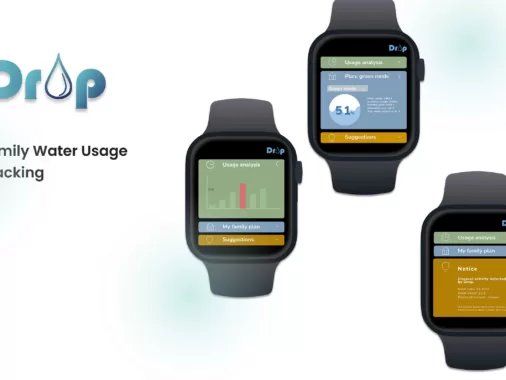As we close out 2020, let’s reflect on the past year and look ahead to what’s likely in store for the UX industry next year. Despite a pandemic and other major challenges, UX continues to be a strong field with a bright future ahead. Let’s take a look at predictions that include the career outlook in UX, how we will work together, and how we will design for our users in 2021.
Adaptations to the New Normal
All of us were part of the great work from home experiment that continues for many of us well into the winter of 2021. As vaccines become more widely available, there will be a slow and cautious return to traditional offices, at least for some of us. For others, companies are exploring different working situations that are considerably more flexible than those available to us back in 2019.
Hybrid collaboration
This year everyone traded in their physical whiteboards, markers, and Post-It notes for Miro, Whimsical, and Freehand to perform affinity diagramming, brainstorming, and sketching. These collaboration tools were used before the pandemic, but have gained rapid adoption and heavy reliance by product design teams.
Many of our colleagues will continue to work from home after the pandemic ends. For those that end up back in the office, this will require a new adjustment to collaboration with these remote team members. In the near future, physical office spaces that were previously optimized for close and frequent collaboration may be repurposed as hybrid meeting spaces to pair those in the office with those working at home.
 Google Jamboard (pictured above) can be used in a conference room or from any device.
Google Jamboard (pictured above) can be used in a conference room or from any device.
In 2021 we will see more investments in hybrid technologies such as Google Jamboard and Microsoft Surface Hub to make it easier to collaborate with in-person and remote team members.
Online and hybrid events
The beginning of 2020 started out as a typical year of in-person conferences throughout the world. By late spring all events had moved online. While this caused massive disruptions and some cancellations for planned in-person events, it offered a unique opportunity to be part of a global community. Many events were retrofitted to host sessions using Zoom or GotoWebinar allowing anyone to attend wherever they were located. Given the success of this new online format, many UX events in 2021 are going forward with an entirely digital venue.

The organizers for CHI 2021 are also exploring a hybrid conference model. This would consist of a physical real-world conference coupled with an online event with both in-person (local) and remote attendees.
Digital transformation opportunities
The digital revolution has been brewing for years, but the pandemic has hastened the change. According to Microsoft CEO Satya Nadella, “We’ve seen two years’ worth of digital transformation in two months.”
In the article, Quarantine UX: The “New Normal, Aaron Chichioco discusses the impact that COVID-19 has had on businesses and how UX needs to help them adapt to the new normal. When asked about UX in 2021, Carmelina Piedra believes that digital transformation is inevitable due to the pandemic.

Before the pandemic, companies like Starbucks focused on innovating their in-store customer experience. Brick-and-mortar stores delivered an omnichannel shopping experience with tablet POS systems and interactive, in-store kiosks. Meanwhile, brands with business models that revolved around sharing, such as Airbnb and Uber, flourished.
However, such innovations may no longer be as useful or wanted in the pandemic environment. For instance, consumers may find the thought of using an in-store touch screen tablet or sharing a ride with strangers not just irrelevant to their needs but frightening. According to Narciso Carlos, new approaches in telehelp or teleassistance may help to bridge this gap in the near future.

There is no doubt that the pandemic was a catalyst for accelerating digital transformation in 2020. Experience designers have an opportunity to help shape what this transformation looks like going into 2021 as we exit the pandemic and the opportunities presented with a new government administration in the United States.
A Strong Job Market for Experienced UXers, While Continued Challenges for Juniors
Despite the pandemic greatly impacting national employment in 2020, established UX professionals still remained in high demand. The exceptions took place primarily in the travel and hospitality sector with well-known layoffs at places like Airbnb, Uber, and Lyft. The next year should continue to see a steadily expanding job market for experienced UXers.
Job-seeking entry-level designers will continue to struggle
Unfortunately like 2020, 2021 will continue to be a bad time for many looking to break into the UX industry. This can mostly be attributed to the explosion of bootcamps and other fast-track career programs. Many individuals took advantage of their extended time at home this year to complete an online bootcamp with the hopes of quickly becoming a UX professional.
Bootcamps continue to expand the number of enrolled students and new programs seem to appear each year. Recently, Big Tech and major academic institutions have stepped in to expand the number of people receiving expedited training in UX including Google, Facebook, Netflix, and Cornell University. This list is likely to expand in 2021 as more corporations see the value of providing basic UX training. The problem is that this is exploding an already oversaturated entry-level job market with individuals that don’t match the qualifications or experience that most employers want.
There is already evidence that students coming out of these programs in 2020 are having difficulty finding jobs in the industry as they are competing for a limited number of entry-level positions. 2021 may prove to be a very difficult year for these individuals and they may need to temporarily explore other career options until the industry corrects this issue.
Ever-Evolving Design Patterns
We look to the big technology players such as Google, Apple, and Microsoft to give us guidance about how design patterns will change in the near future. Ben Virdee-Chapman believes that next year’s design trends will be about “fast UX”, similar to the “fast fashion” strategy where inexpensive clothing is produced rapidly by mass-market retailers in response to the latest trends.

Unfortunately, change for the sake of change won’t help our users and is likely rooted in the benefits to branding and marketing rather than user experience. It will be interesting to see how many organizations adopt these new design patterns in 2021.
Google’s new approach to iconography
This year, Google revised the design of their Google Suite icons. Three words describe Google’s new approach to iconography: uniform, minimalistic, indistinct.
According to the 7 Principles of Icon Design, an icon’s primary goal is to communicate a concept quickly.
It is unclear if Google will continue to permeate this new design approach within the rest of their applications and into their Material Design System, but hopefully, they will listen to their users who will assuredly steer them in a different direction in 2021.
Apple and Microsoft go with soft 3D skeuomorphism
Apple’s latest macOS called Big Sur comes with new design patterns and Microsoft’s new design system called Fluency takes a similar approach. The icons are somewhat of a departure from a long-standing trend of flat design in favor of using aspects of skeuomorphism with an increased use of shadows to add depth.

It is too early to tell how users will react to these new design patterns but expect to see them incorporated into many iOS app designs next year.
Wishing you a Happy and Successful New Year
There are many reasons to be optimistic about the future of user experience going into 2021. Everyone at UX Booth wishes you a very Happy New Year!
`



 Google Jamboard (pictured above) can be used in a conference room or from any device.
Google Jamboard (pictured above) can be used in a conference room or from any device.







